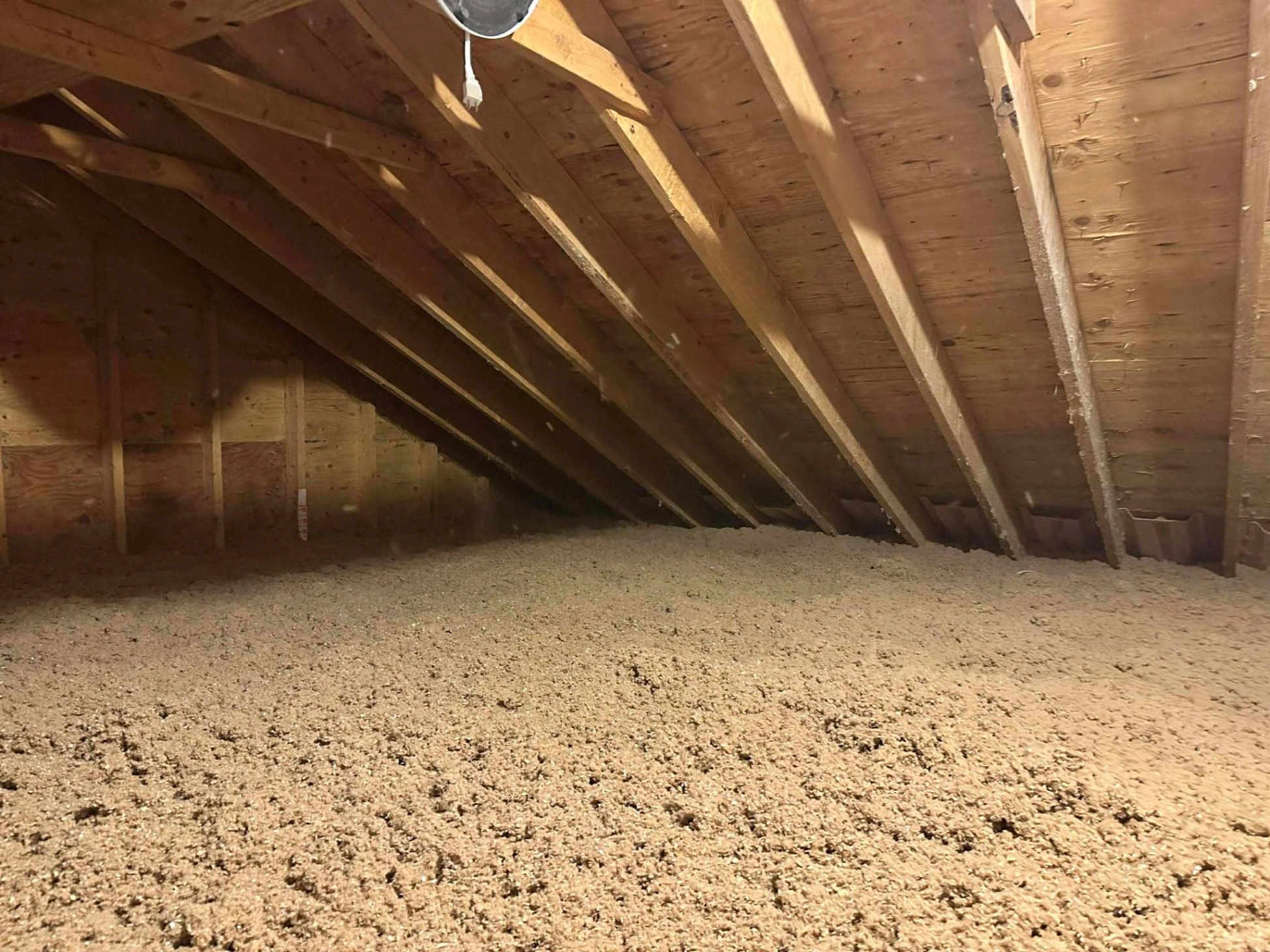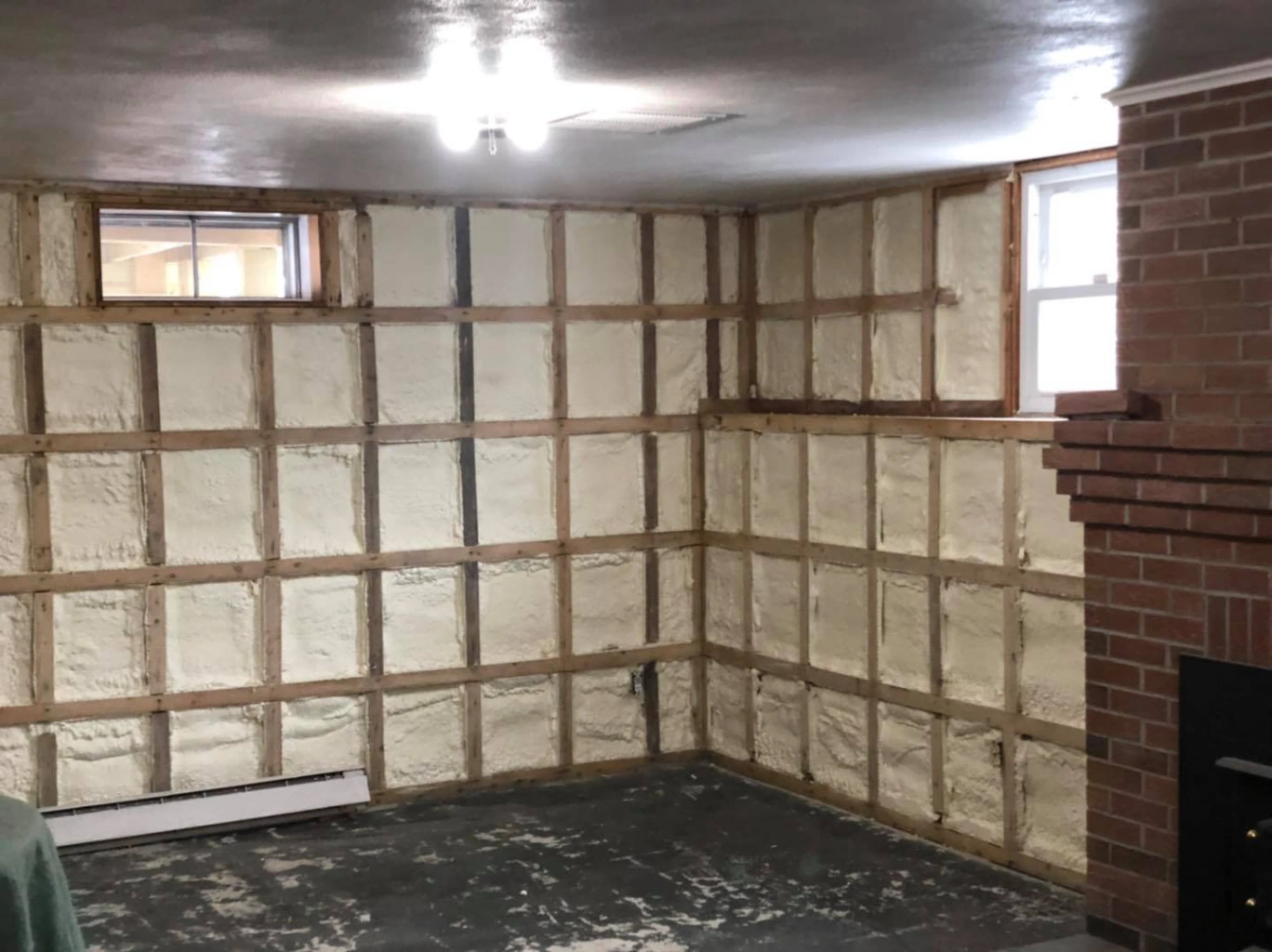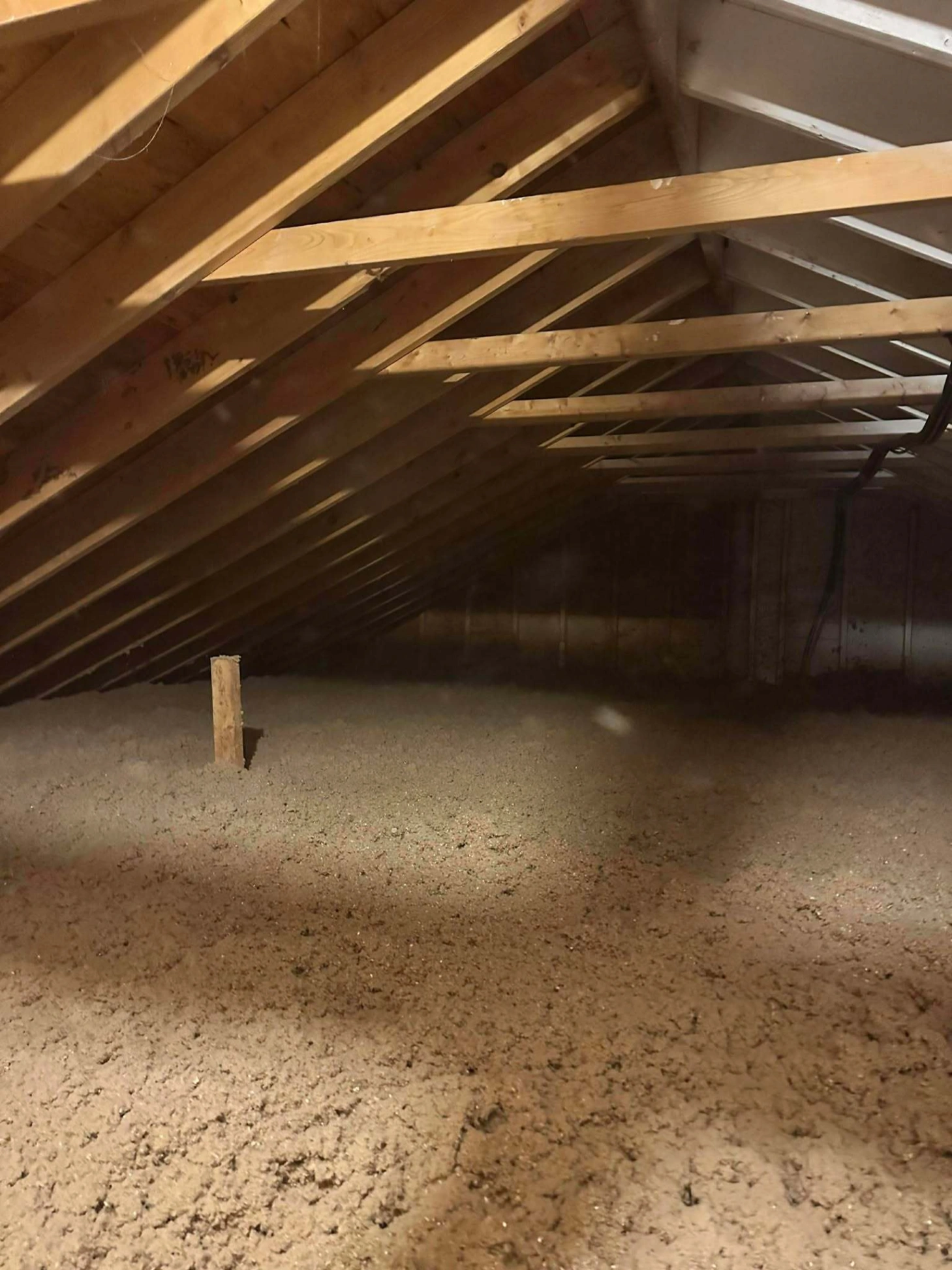
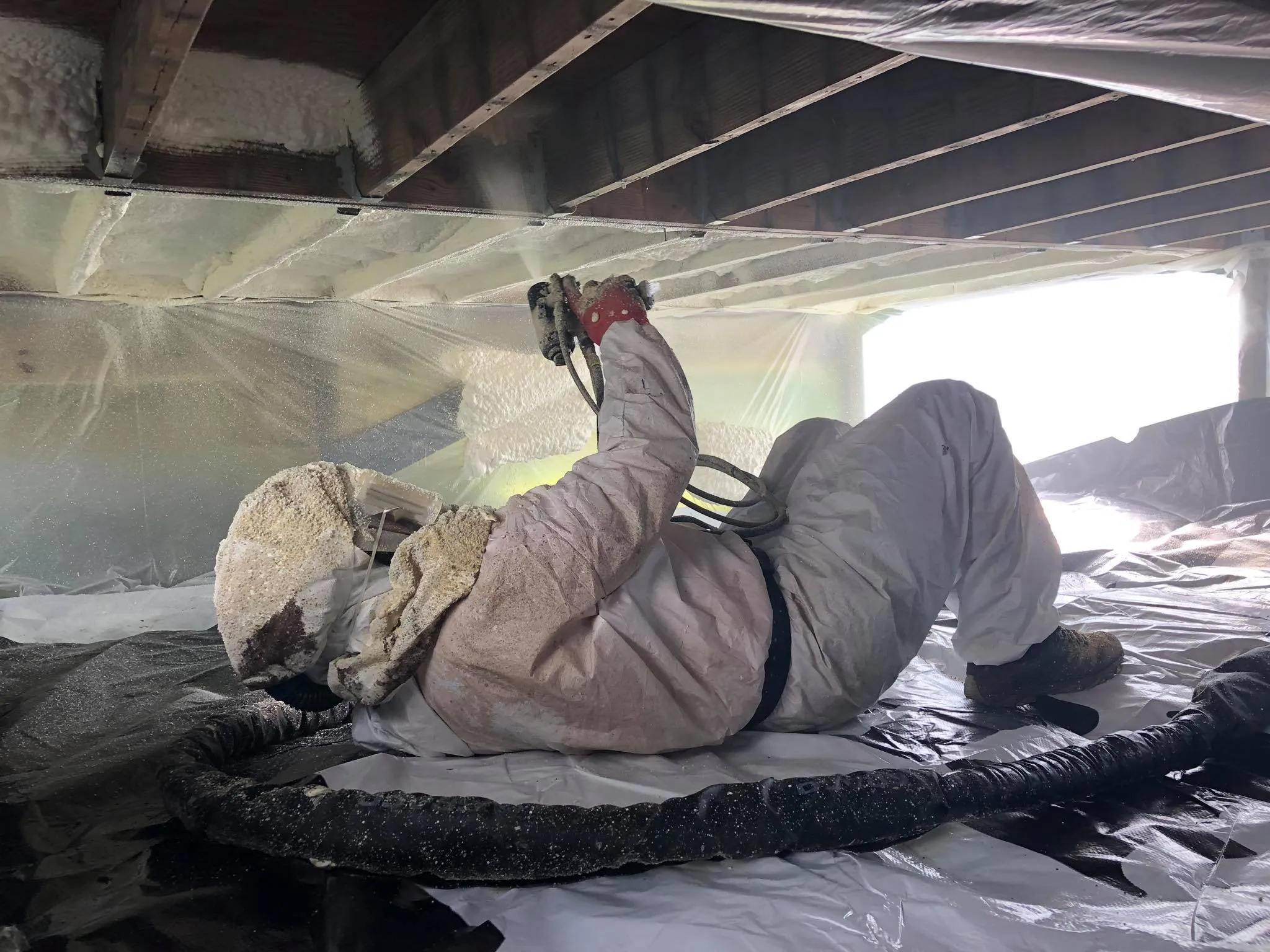
Spray foam insulation in Shrewsbury home should begin in areas with the highest heat loss and moisture risk. Attics and rooflines take top priority due to their direct exposure to outdoor temperature shifts and their role in overall energy efficiency. Next in sequence are exterior walls, followed by basements and crawl spaces. These zones form the critical thermal boundary of a home and significantly impact comfort, energy use, and HVAC load.
This article breaks down the best order for insulating a home in the Shrewsbury region, accounting for local climate demands, building structure, and insulation method compatibility. All insights reflect direct field experience from active insulation contracting in Massachusetts.
Attics account for the majority of heat gain in summer and heat loss in winter. Insulating the attic floor or roof deck with open-cell spray foam or blown-in cellulose is typically the most effective first step.
Bonus Tip: In older homes, check for existing fiberglass batts that may have settled or been compressed over time these often need removal and replacement.
Walls are the next critical layer. Dense-pack cellulose or closed-cell spray foam offers high thermal resistance and air sealing, especially useful in windy winter conditions in Central Massachusetts.
Bonus Tip: Use thermal imaging to identify cold spots or voids during colder months before applying wall insulation.
Rim joists and crawl spaces allow drafts and condensation. Closed-cell spray foam is recommended here to reduce air infiltration and resist moisture.
Bonus Tip: Always seal bulk moisture sources (leaks, poor grading) before insulating below-grade areas.
| Area | Heat Loss Impact | Moisture Risk | Recommended First Step | Suitable Material Types |
|---|---|---|---|---|
| Attic/Roofline | High | Medium | Air seal & insulate roof or attic floor | Open-cell foam, blown-in cellulose |
| Exterior Walls | High | Low | Dense-pack into cavities | Closed-cell foam, dense-pack cellulose |
| Rim Joists | Medium | High | Spray directly on rim area | Closed-cell foam |
| Crawl Space/Basement | Medium | High | Seal walls and floors | Closed-cell foam, mineral wool |
| Interior Walls & Ceilings | Low | Low | Secondary priority for sound control only | Mineral wool, batt insulation |
| Material Type | R-Value Per Inch | Moisture Resistance | Air Sealing Capability | Common Use Areas |
|---|---|---|---|---|
| Open-Cell Spray Foam | 3.5 – 3.8 | Moderate | High | Attics, rooflines |
| Closed-Cell Spray Foam | 6.0 – 7.0 | High | High | Rim joists, crawl spaces |
| Blown-In Cellulose | 3.2 – 3.8 | Low | Medium | Attic floors, wall cavities |
| Dense-Pack Cellulose | 3.6 – 4.0 | Low | Medium | Existing walls |
| Mineral Wool | 3.7 – 4.2 | High | Low | Basements, interior soundproofing |
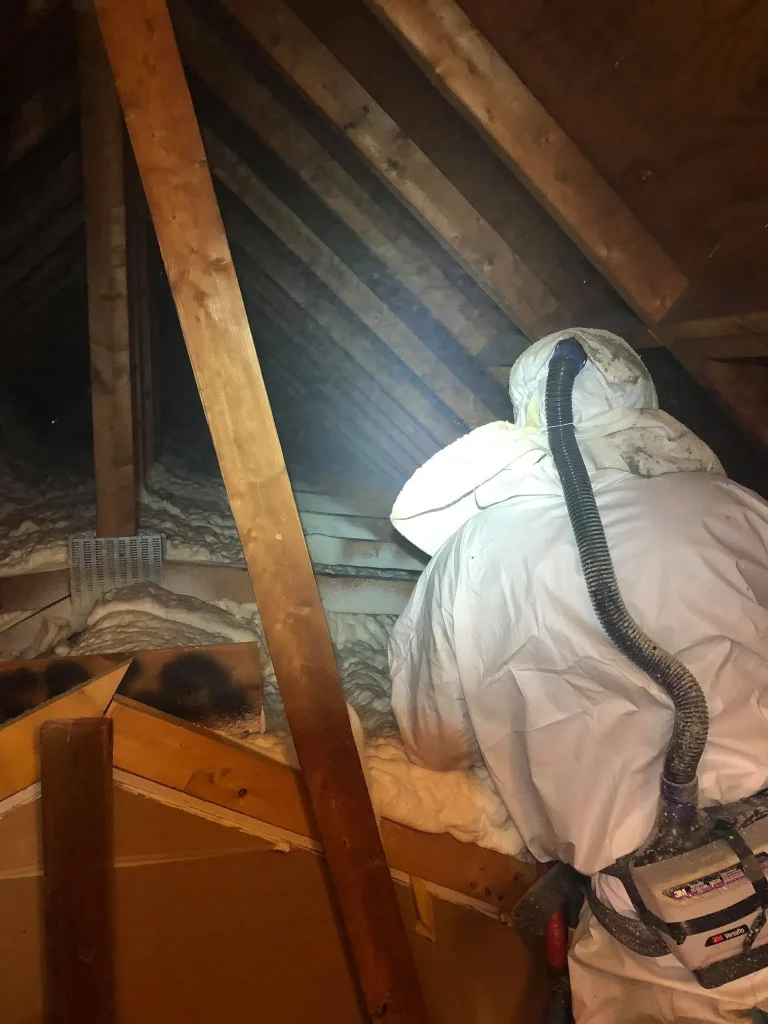
Shrewsbury lies in Climate Zone 5A, where winters are cold and summers are humid. This means materials must perform under both heating and cooling loads. Closed-cell foam’s vapor resistance is useful in basements prone to condensation. Open-cell foam balances affordability with strong thermal performance in attics where vapor issues are lower.
Market Insight: According to Energy Star, properly insulating and air sealing a home in this climate zone can cut HVAC costs by up to 15% annually (Source: EnergyStar.gov).
Attics and rooflines, especially without proper air sealing, contribute the most to winter heat loss.
No. Moisture issues must be corrected before applying insulation to avoid trapping water and causing mold.
Attic insulation has a higher immediate impact on energy efficiency in most Shrewsbury homes.
Yes. Proper insulation prevents heat gain, which reduces cooling demand.
Start with attics and rooflines, move to exterior walls, then seal rim joists and crawl spaces. The right order improves energy performance and avoids trapped moisture or air imbalance. Align the approach with the home’s age, structure, and climate exposure.
Lamothe Insulation & Contracting brings direct, hands-on experience working on homes across Shrewsbury and the surrounding area. To schedule an insulation assessment or learn more about how to approach your home, contact:
Phone: (508) 847-0119
Email: [email protected]
Check every 3-5 years for moisture damage, settling, or pest issues.
Unusual temperature swings, high energy bills, or drafty rooms.
Only if the existing material is dry, clean, and structurally intact.
Closed-cell foam typically doesn’t need a separate vapor barrier; open-cell might, depending on placement.
Yes, especially with mineral wool or dense-pack cellulose in interior walls.

